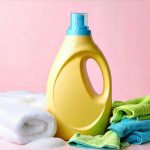The increasing accessibility of at-home urine test strips has led to their widespread use for various purposes, ranging from tracking hydration levels to monitoring potential health concerns. These tests typically rely on detecting specific chemical markers in urine that indicate physiological states or conditions. However, a frequently overlooked factor is the potential for interference caused by common household cleaning products and chemicals found in everyday dishwashing detergents. This interference can lead to inaccurate results, causing unnecessary anxiety or, conversely, masking genuine problems. Understanding how these substances interact with test strips is crucial for obtaining reliable readings and making informed decisions about one’s health.
The core principle behind most at-home urine tests involves a color change on the strip triggered by a reaction with specific biomarkers in the urine sample. This color intensity is then compared to a chart provided with the test, indicating the concentration of the target substance. However, many dishwashing chemicals share similar chemical properties or react with the testing reagents, leading to false positives or negatives. Furthermore, residual traces of these substances on collection containers, even after washing, can contaminate the sample and compromise its accuracy. This is particularly relevant for individuals using urine tests for fertility tracking, early pregnancy detection, or monitoring chronic health conditions where precise results are paramount. If a child has a slow urine stream it is important to seek medical advice.
Common Dishwashing Chemicals & Their Interference Mechanisms
Many dish soaps contain a blend of chemicals designed to cut grease, remove food particles, and disinfect surfaces. These include surfactants (like sodium lauryl sulfate), builders (such as phosphates or citrates), enzymes, pH adjusters, and bleaching agents. Each component has the potential to interact with urine test strips in different ways. Surfactants can alter the surface tension of the urine sample, affecting reagent diffusion and color development. Builders like phosphates might react directly with chemicals on the strip designed to detect other substances, leading to false positives for protein or pH levels. Enzymes present in some detergents could even break down compounds intended to be measured by the test, resulting in falsely low readings.
Bleach, often added to dishwashing solutions for disinfecting purposes, is a particularly problematic substance. Even trace amounts of bleach can dramatically alter the chemical composition of urine, causing inaccurate results across multiple parameters. Similarly, quaternary ammonium compounds (QACs), found in some sanitizing dish soaps, are cationic surfactants that can interfere with the detection of ketones and glucose – crucial indicators for individuals monitoring diabetes or following ketogenic diets. The level of interference is directly proportional to the concentration of these chemicals present in the urine sample; therefore, thorough rinsing of collection containers is essential. It’s important to be aware if your urine changes scent as this can indicate an underlying health issue.
The impact extends beyond simple inaccuracies. False positives could lead to unnecessary medical consultations and anxiety, while false negatives might delay diagnosis and treatment for genuine health concerns. For example, a false negative result on a pregnancy test due to detergent interference could cause someone to unknowingly continue behaviors harmful during early gestation. Therefore, understanding these potential interactions is vital for responsible use of at-home urine testing.
The Role of Collection Containers & Pre-Test Preparation
The cleanliness of the collection container plays a significant role in ensuring accurate results. Even seemingly “clean” containers can harbor residual detergent molecules that leach into the urine sample during testing. Disposable, single-use collection cups are the ideal choice to minimize contamination risk. If reusable containers must be used, they should undergo meticulous cleaning using hot water and potentially several rinses with distilled or deionized water, followed by thorough drying. Avoid using abrasive cleaners or dish soap when washing these containers, as this can leave behind residual chemicals that interfere with test results.
Beyond container cleanliness, proper pre-test preparation is crucial. Individuals should avoid using any scented soaps, lotions, or feminine hygiene products in the hours leading up to urine collection, as these may contain interfering substances. It’s also advisable to wait at least 30 minutes after urinating to allow for a more concentrated sample. Hydration levels can also influence test results; therefore, following the specific instructions provided with the test kit regarding fluid intake is essential. Finally, it’s critical to read and understand the warnings and limitations outlined in the product packaging of both the urine test strips and any cleaning products used nearby. If you experience urinary pain it’s important to seek medical attention.
Impact on Specific Test Parameters
Different parameters measured by urine test strips are susceptible to interference from dishwashing chemicals to varying degrees.
- Ketone testing: As mentioned previously, QACs can produce false negatives for ketone levels, potentially misleading individuals following ketogenic diets or monitoring diabetic ketoacidosis. This is because QACs react with the ketone reagent on the strip, preventing accurate color development.
- Glucose testing: Certain enzymes and surfactants in dish soap may interfere with glucose detection, leading to inaccurate readings for those managing diabetes. Even trace amounts of residual detergent can cause a false reading, either masking high blood sugar levels or creating unnecessary concern with falsely low results.
- Protein testing: Builders like phosphates present in some detergents can react with the protein reagent on strips, potentially causing false positives. This could lead to unnecessary follow-up investigations for kidney health when no actual issue exists.
Mitigating Interference & Ensuring Accuracy
Several strategies can be employed to minimize the risk of interference from dishwashing chemicals and ensure more accurate test results:
- Utilize disposable collection containers: Single-use cups are the most reliable option, eliminating the chance of residual detergent contamination.
- Thorough rinsing: If reusable containers must be used, wash them meticulously with hot water and rinse repeatedly with distilled or deionized water.
- Avoid scented products: Refrain from using scented soaps, lotions, or feminine hygiene products prior to sample collection.
- Follow test instructions: Carefully adhere to the specific guidelines provided with the urine test kit regarding hydration levels, timing of collection, and interpretation of results.
- Consider alternative testing methods: For individuals requiring highly accurate readings – such as those managing chronic health conditions – consider consulting a healthcare professional for laboratory-based urine analysis. It may be helpful to review foods that don’t interfere with recovery if you are experiencing urinary issues.
Future Directions & Research Needs
Further research is needed to fully understand the extent of interference caused by various dishwashing chemicals on different types of urine test strips. Manufacturers should clearly label their products with information regarding potential interactions and provide guidance on minimizing contamination risk. Moreover, development of more robust test strips that are less susceptible to interference could significantly improve the reliability of at-home testing. Educating consumers about these risks through clear and accessible resources is also essential for promoting responsible use of this increasingly popular technology. Are sleep disorders common in people with bladder problems? This should be considered when evaluating symptoms.





















